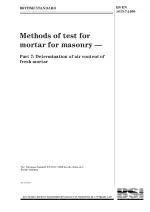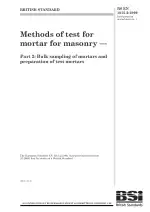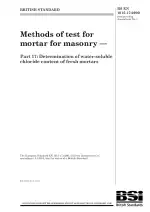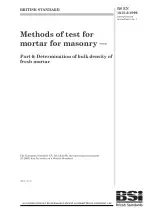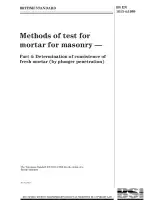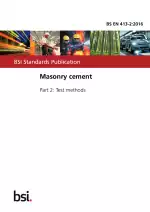BS EN 1015-7:1999 PDF Download
Standard ENMethods of Test for Mortar for Masonry: Determination of Air Content of Fresh Mortar
Also Known As:
BS EN 1015-7:1999 is a standard that provides methods for testing the air content of fresh mortar used in masonry. The standard outlines two methods for determining the air content of mortar: one using applied air pressure and the other using an alcohol-water mix to displace air from the pores.
The first method involves using applied air pressure to displace the air from the mortar. This method includes applying a known pressure to the mortar sample and measuring the volume of air that is expelled. The volume of air expelled is then used to calculate the air content of the mortar.
The second method involves using an alcohol-water mix to displace the air from the pores of the mortar. In this method, the mortar sample is submerged in the alcohol-water mix and allowed to saturate. The displaced air bubbles are collected and measured to determine the air content of the mortar.
These methods outlined in BS EN 1015-7:1999 provide reliable and standardized procedures for determining the air content of fresh mortar.
| Descriptors | Determination of content, Construction materials, Masonry cement, Cement and concrete technology, Mortars, Air content determination, Masonry work, Test equipment, Test specimens |
| ICS Codes | 91.100.10 - Cement. Gypsum. Lime. Mortar |
| Language(s) | English |
| ISBN | 0 580 30749 2 |
| File Size | 133.1 KB |

